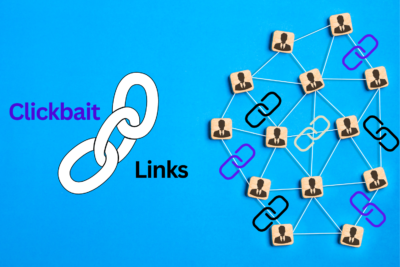In the first place, it must be noted that Decentralized Applications (DApps) existed long before the advent of distributed ledger technologies. There have been platforms utilizing peer-to-peer networks to great effects, such as the original Napster. Blockchain technology, particularly Ethereum’s rise to prominence, popularized both the concept and ‘dApp.
This article will examine what makes dApps unique, their benefits, and the obstacles they must overcome to become a genuine competitor to the centralized model.
But, before we can even begin, it’s worth mentioning a little about the role of Blockchain Technology (like Bitcoin and Ethereum) in general plus its involvement in the realms of DApps design.
As a matter of fact, blockchain technology is quite a bit older than Vitalik Buterin’s invention, with a number of blockchain protocols already in existence when Ethereum appeared on the scene. The short answer is intelligent contracts.
As we’ve previously discussed on previous pages, Ethereum was designed to be a general-purpose blockchain for new miners.
Why Smart Contracts Matter In Blockchain Technology
In the Cryptocurrency world, Ethereum is capable of supporting and facilitating the development of any type of application. To accomplish this, Ethereum implemented a Turing-complete programming language called Solidity, an old concept inspired by vending machine design. Ethereum popularized the implementation of smart contracts in blockchain apps.
Remarkably, Ethereum has remained the leading platform for smart contracts and, consequently, Decentralized App Development (dApps) despite the emergence of several prominent competitors. Intelligent contracts are the vital organs of decentralized applications. These programs execute themselves and are used to define the logic of decentralized apps.
By definition, a Smart Contract is essentially a decentralized application because it already provides backend functionality to its native blockchain. Combine this with a user interface capable of making calls to the backend interface.
And then, on the other side, you have got a blockchain-based application that resembles a conventional app. Obviously, you can write multiple smart contracts to build more complex applications and add more functionality.
Centralized Applications Vs Decentralized Applications (DApps)
Firstly, Decentralized Applications (DApps) are software programs with backend code running on a distributed computer network. This is in stark contrast to conventional applications, which are typically hosted on centralized servers. In conjunction with other blockchain-driven innovations, this provides DApps with distinct characteristics and advantages.
More so, than their centralized counterparts. Nevertheless, at this relatively early stage in their development, dApps have their fair share of disadvantages. Given the prevalence of centralized apps and our familiarity with them, the question arises as to whether decentralized applications are even necessary. Ultimately, the centralized model is quite very effective.
And, in some ways, it’s superior to the decentralized approach. Indeed, in their current state, dApps have numerous bugs that must be fixed. However, they also possess several key benefits that hint at their great potential, even at this early stage in the evolution of decentralized apps. So let’s examine what dApps bring to the table and how they compare to centralized apps.
Security
This is one area where decentralized applications excel. Due to the nature of DLT, dApps are inherently very secure. Decentralized systems based on blockchain or other distributed ledger technologies circumvent the single point of failure issue inherent to centralized server-based systems. Moreover, blockchains and DLTs are highly resistant to malicious attacks due to their robust consensus mechanisms. Another significant benefit of DLT systems is that they are immutable, meaning that data stored on such systems cannot be altered or otherwise manipulated.
Speed
This is one of the issues facing the current generation’s blockchain platforms and decentralized applications. All of this stems from the limited scalability of blockchain technology, making it difficult for most blockchain networks to process large volumes of transaction data simultaneously. This frequently causes network congestion, especially when dApp usage is high. The digital collectibles game CryptoKitties became so popular shortly after its release in 2017 that it clogged the Ethereum network.
Cost
The scalability issue also results in increased blockchain network usage costs. Since transaction processing requires payment of miner fees, network congestion results in significant cost increases, as users must pay more to have their transactions processed more quickly. Ethereum has a long history of increasing gas prices due to heavy network usage.
Solving the scalability issue has been a top priority. Ethereum has implemented several Layer 2 scaling solutions with promising results.
The platform is undergoing a major transformation from proof-of-work to proof-of-stake and sharding. Both of these enhancements are part of the Ethereum 2.
0 project.
Openness
Unlike centralized apps, dApps are open and permissionless, which is one of their greatest advantages. There is no way to restrict access to a specific decentralized application because public, decentralized systems such as Ethereum are not under anyone’s control. This also implies that decentralized apps are free of censorship. However, the open nature of dApps becomes even more significant when we consider its effect on the development side of the industry.
Some Decentralized Applications Use Cases Today
To begin with, almost all dApps are essentially open-source, enabling developers to build upon one another’s work, combining and recombining different elements from different projects to create new types of applications and services. This encourages innovation and allows the space to grow and evolve in fascinating and unexpected ways.
As a result of its ability to attract development talent and foster innovation, the blockchain space has already become home to a variety of decentralized applications, and developers are continually exploring new ways to implement the technology. Several domains, including DeFi, Enterprise Solutions, Gaming, and Digital Collectibles, have already demonstrated the tremendous potential of dApps.
Decentralized Finance (DeFi)
Unquestionably the strongest use case for dApps at present, DeFi applications are attracting significant investor interest and fueling a market worth over $40 billion. The rapidly expanding DeFi industry intends to challenge traditional finance by introducing new ways to borrow and lend money and by enabling the development of innovative financial services such as liquidity mining.
Enterprise Solutions
Blockchain-based solutions have the potential to disrupt numerous industries and assist businesses in achieving greater growth and operational efficiency. Already, enterprise-grade dApps have impacted many industries, including supply chain management, healthcare, and the pharmaceutical industry.
Gaming And Digital Collectibles
As previously mentioned, the first dApp to achieve widespread popularity was a game. Following the launch of CryptoKitties, several similar projects have attempted to duplicate the success of this decentralized application. Games such as Decentraland and Gods Unchained demonstrate that there is still a substantial demand for gaming dApps, even though none of these have achieved the same level of popularity. Moreover, the recent proliferation of non-fungible tokens has demonstrated the viability of blockchain-based digital collectibles.
Conclusion
While blockchain technology is still maturing, the case for decentralized applications is already strong. And as the technology continues to mature, dApp development will only expand, allowing for the creation of more sophisticated applications and new categories of dApps. It remains to be seen whether decentralized apps can supplant conventional apps, but it appears that they will play an important role in the digital future.








